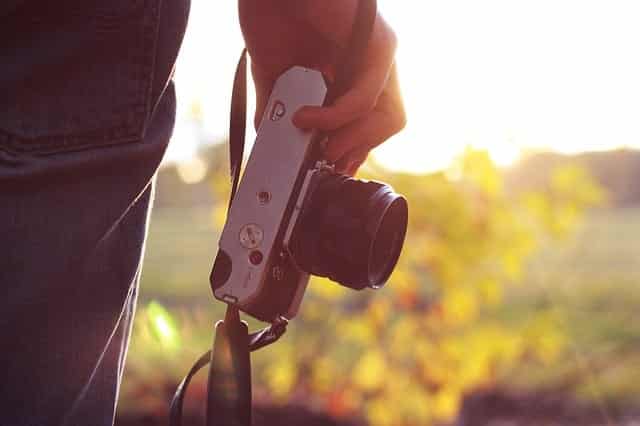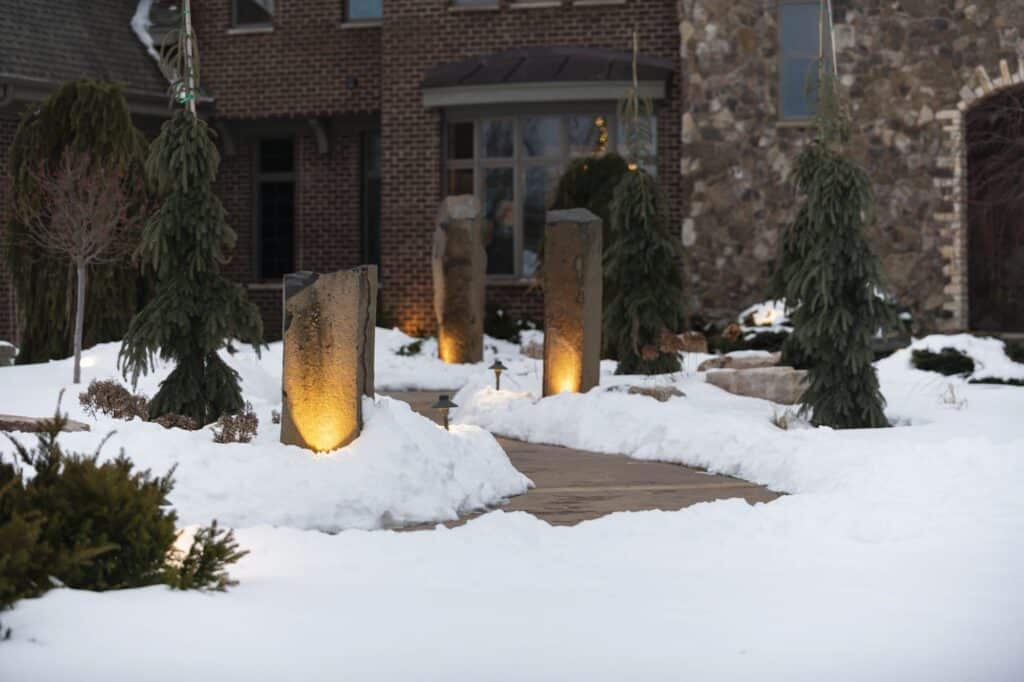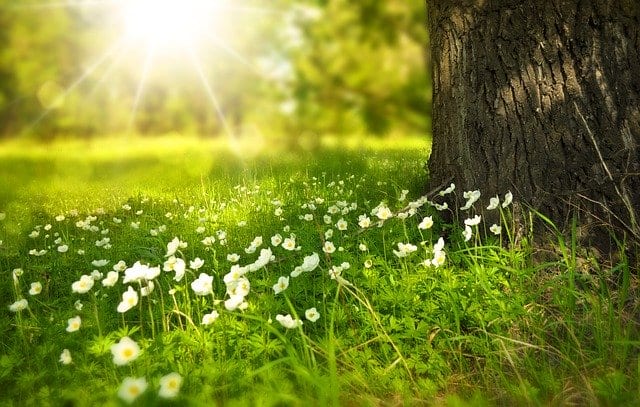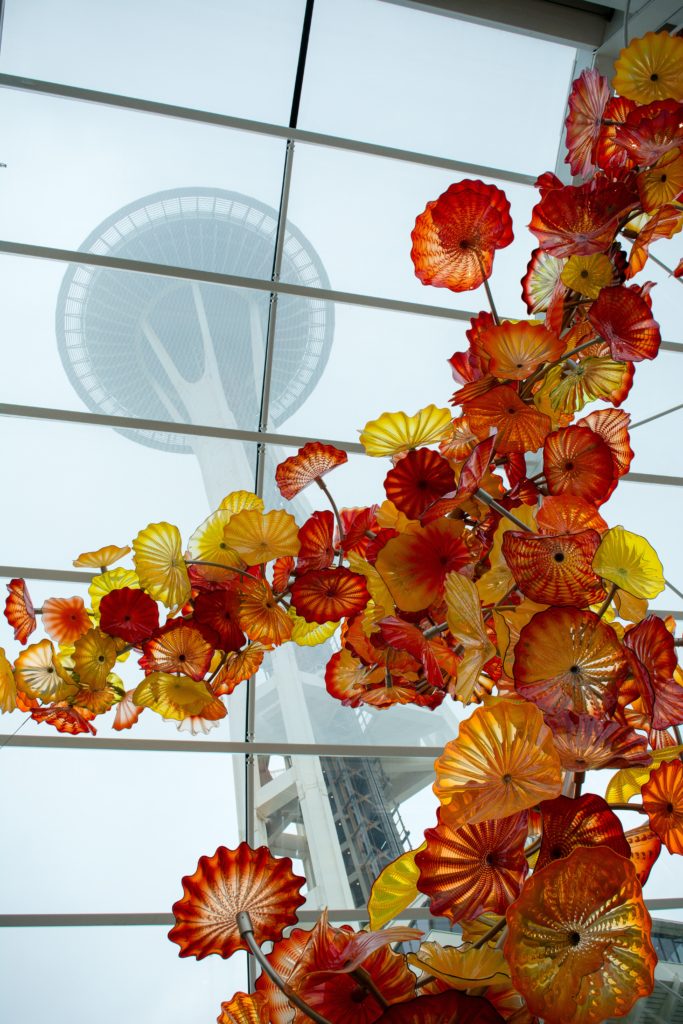
You love your landscape and want to share it. This has never been easier but you want to do it right to show your flair.
In addition to understanding a few basic photography principles, you’ll need to know the nuances that are unique to the outdoor environment.
Once you learn them your photos will jump off the screen. Landscape settings that you now admire will be elevated to the dramatic.
There are special techniques that are specific to landscape photography. You’ll discover dozen that relate to the following landscape design principles.
Perspective
One of the most common landscape photography mistakes is the lack of perspective. If you search for crab apple tree on any of the free stock photo services the majority of the images will be closeups of one branch.
Think of perspective as storytelling. A photo of a tree with people in it provides perspective. This is true of other common objects such as houses, cars, patios, and swimming pools. They provide a sense of scale and appropriate uses.
One of the tricks for better perspectives is using a step ladder to shoot photos. The slight downward view profiles lawns and smaller plantings that would otherwise be partially obscured. A generous lawn area anchors a landscape, but this may not be apparent from ground level, especially if slopes are involved.
Focal Points
Landscape designers use focal points for a variety of reasons. An intermediate focal point is commonly used to focus the eye toward the main entrance of the home. This may be done for emphasis, safety, or most likely both.
For photography purposes, it’s best to divide the photo frame into thirds and avoid placing the focal point in the middle third. By locating it to the left or right of the frame you create visual movement that adds interest to the photo.
Sometimes focal points are used to pull the eye away from undesirable views. It stands to reason that if you can avoid including the undesirable feature in your photo it will be improved.

Before and After
People know what an object is by comparison and contrast. Here are some before and after landscape photography possibilities to consider.
Before and after:
- Initial construction
- A rainy period
- Spring or fall clean-up
- Deadheading annual flowers
- The beginning and end of a month or season
- The addition of new plantings or features
- Nightfall and after with landscape lighting
- The installation of holiday lighting
- Just after sunrise and before sunset
These before and after possibilities introduce the element of time to your photographs. This helps to tell a story in a variety of ways, which further enhances your photos for Instagram and Facebook stories
People and Pets
Photography is storytelling and people and pets humanize those stories to make them relatable. If you love Golden Retrievers and discover a landscape photo with one happily playing, there’s a good chance you would favorably respond to that landscape too.
Website developers know that even stock photos with people in them will make the website more appealing to visitors. This increases the likelihood that it will accomplish the website’s objectives, and raises the question, what are you trying to accomplish with your photos?
A photo is a snapshot of a moment in time that will never return. Therefore, to increase your options, take your landscape photos from different perspectives and with and without people and pets.
Themes
Every landscape should have a theme that gives it focus. As you probably know, form follows function. Getting clear about how you plan to use an outdoor environment guides the elements necessary for its success.
If your home and landscape were designed around a Cape Cod theme your landscape photos can profile the specific features of that style. This makes your photos a feeling of being more congruent with the expectations of the theme.
Of course, straying from the theme introduces an element of surprise that will spark engagement with your photos. These landscape design principles all have a flip side to them. Use them to achieve your photography goals.
Light and Humidity
The artist Georgia O’Keeffe created magnificent paintings that captured the beauty of Northern New Mexico. One of the techniques she mastered was the play of light in the high-desert environment. The low-humidity and fresh mountain air made the colors of the landscapes she painted stunngingly brilliant.
You are most likely living in an environment that has moderate to high humidity for at least portions of the year. It’s important to remember that humidity softens colors by deflecting and obscuring natural light.
Therefore, you will want to experiment with photos taken during different times of the day to create interesting effects. Midday is typically a time to avoid when taking landscape photographs because the light intensity is high and often so is humidity.
You will often find success by shooting photos in the early morning and late afternoon. In addition to the different qualities of light and humidity at those hours, you will also have contrasting shadows.

Contrasting Styles
A landscape that incorporates a mix of styles lends itself to more interesting photos. The juxtaposition of a formal outdoor space in the foreground with a more natural landscape behind it can be dramatic.
Another type of contrast could be informally dressed people in a formal outdoor space.
The contrast of colors and styles is an opportunity for uniqueness. You can also introduce props that further contrast people and the outdoor space you are photographing.
Outdoor Rooms
Newer mobile phones have excellent cameras, now with greatly improved wide-angle and telephoto lenses. However, the outdoors is a big place and the lens necessary to properly capture it will exceed the budget of most people.
If you are fortunate to have outdoor rooms to work with the photo possibilities are endless. The reason for this is that defined outdoor living spaces are easier to photograph than open landscapes. You know this to be true if you’ve ever tried to capture the magnificence of the Grand Canyon or Niagra Falls.
The line between indoor and outdoor rooms is disappearing. This makes outdoor rooms an ideal opportunity for showcasing indoor activities in unexpected ways.
What If
To be accurate, “what if” is not a design principle but a question. It’s one that every landscape designer will consider to give his or her client more than they imagined was possible.
What if your favorite bronze sculpture was photographed with a low-growing bed of fragrant sweet alyssum?
This “what if” question may be one that prompted Dale Chihuly to feature his glass sculptures in outdoor environments and indoor botanic gardens. The contrast is striking and that enhances all of the elements.
Keep these landscape design and photography principles in your back pocket. Use them in different combinations and you will soon discover new ways to create landscape photography that shows your flair.

